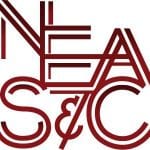Providence College celebrated the close of its record-breaking fundraising campaign, Our Moment: The Next Century Campaign for Providence College, during St. Dominic Weekend, Sept. 15-16.
The most successful campaign in College history raised $185 million, shattering the target of $140 million announced at its public launch in October 2014. It featured gifts from more than 35,500 donors, including alumni, parents, faculty, staff, corporations, and foundations. Forty-two percent of the College’s 56,000 alumni made a gift during the campaign, and 41 donors made commitments of $1 million or more.
The seven-year Our Moment campaign transformed campus, enabling the construction of the Ruane Center for the Humanities, the Arthur F. and Patricia Ryan Center for Business Studies, the Ray Treacy Track and Field, and Chapey Field at Anderson Stadium. It established five endowed professorships and three endowed lectureships. The amount of financial aid and scholarships awarded to students increased by 45 percent, to more than $70 million annually, and 120 endowed scholarships were created.
Gifts to the campaign enhanced research and study abroad opportunities, bolstered the implementation of a new core curriculum, and supported diversity initiatives and new programs, such as The Humanities Forum.
The successful close was announced at a celebration on Saturday night in the Peterson Recreation Center that drew alumni, trustees, students, administrators, faculty, and staff. St. Dominic Weekend is an annual event during which the College thanks its most generous benefactors.
At the event, College President Rev. Brian J. Shanley, O.P. ’80 said visitors frequently tell him, “I can’t believe what you have done” in transforming the campus. But most significant, Father Shanley said, is the campaign’s impact on students.
“For me, the most important part of this campaign is that we’ve been able to increase financial need-based aid to our students as a result of philanthropy,” Father Shanley said. “I love our buildings, but I’m more interested in investing in our students, who can be transformed in their hearts, souls, and minds in beautiful academic spaces.”
The campaign also made possible the replacement of Huxley Avenue, a city street that bisected campus, with a landscaped walkway and a new entrance off Admiral Street. A softball field was built, and Schneider Arena and Mullaney Gym in Alumni Hall were renovated.
Ongoing projects include an expansion and renovation of the Science Complex and the multiphase construction of the Ruane Friar Development Center, which will include a basketball practice facility, a new Center for Career Education & Professional Development, and an expanded and a renovated Slavin Center ’64 Hall.
“Providence College is at an incredible point in our history,” said Gregory T. Waldron, senior vice president for institutional advancement. “We are experiencing unprecedented momentum academically, athletically, and with admissions. The philanthropic support of the Friar faithful has been critical to our success thus far and will be just as critical to our future success.”
At the campaign celebration, Adam Hanna ’18 (Lakeville, Mass.), a singer and songwriter, played and sang a ballad, “100 Years,” that he composed for the occasion.
“This is in honor of the last 100 years, it’s looking forward to the next 100, and it’s knowing that in some way, we’re all a part of both,” said Hanna.
“One hundred years ago, no one we know was here,” Hanna sang. “Poor people, of simple means, 100 years ago, accomplished things they never could have dreamed. … Time is a tiny plot of land we worked so hard to clear. We have a lease that says 100 years.”



